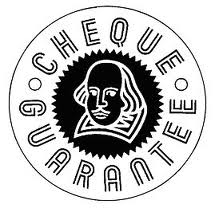 W
WA cheque, or check, is a document that orders a bank to pay a specific amount of money from a person's account to the person in whose name the cheque has been issued. The person writing the cheque, known as the drawer, has a transaction banking account where their money is held. The drawer writes the various details including the monetary amount, date, and a payee on the cheque, and signs it, ordering their bank, known as the drawee, to pay that person or company the amount of money stated.
 W
WCheque clearing or bank clearance is the process of moving cash from the bank on which a cheque is drawn to the bank in which it was deposited, usually accompanied by the movement of the cheque to the paying bank, either in the traditional physical paper form or digitally under a cheque truncation system. This process is called the clearing cycle and normally results in a credit to the account at the bank of deposit, and an equivalent debit to the account at the bank on which it was drawn, with a corresponding adjustment of accounts of the banks themselves. If there are not enough funds in the account when the cheque arrived at the issuing bank, the cheque would be returned as a dishonoured cheque marked as non-sufficient funds.
 W
WA crossed cheque is a cheque that has been marked specifying an instruction on the way it is to be redeemed. A common instruction is for the cheque to be deposited directly to an account with a bank and not to be immediately cashed by the holder over the bank counter. The format and wording varies between countries, but generally, two parallel lines may be placed either vertically across the cheque or on the top left hand corner of the cheque. By using crossed cheques, cheque writers can effectively protect the instrument from being stolen or cashed by unauthorized persons.
 W
WThe Eurocheque was a type of cheque used in Europe that was accepted across national borders and which could be written in a variety of currencies.
 W
WA cheque guarantee card was literally an abbreviated portable letter of credit granted by a bank to a qualified depositor in the form of a plastic card that was used in conjunction with a cheque.
 W
WThe substitute check is a negotiable instrument that represents the digital reproduction of an original paper check. As a negotiable payment instrument in the United States, a substitute check maintains the status of a "legal check" in lieu of the original paper check as authorized by the Check Clearing for the 21st Century Act. Instead of presenting the original paper checks, financial institutions and payment processing centers transmit data from a substitute check electronically through either the settlement process, the United States Federal Reserve System, or by clearing the deposit based on a private agreement between member financial institutions of a clearinghouse that operates under the Uniform Commercial Code (UCC).
 W
WA traveller's cheque is a medium of exchange that can be used in place of hard currency. They can be denominated in one of a number of major world currencies and are preprinted, fixed-amount cheques designed to allow the person signing it to make an unconditional payment to someone else as a result of having paid the issuer for that privilege.
 W
WCheque truncation is a cheque clearance system that involves the digitalisation of a physical paper cheque into a substitute electronic form for transmission to the paying bank. The process of cheque clearance, involving data matching and verification, is done using digital images instead of paper copies.